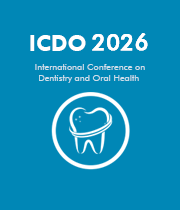Title: Oral and Systemic Health: A Microbial and Genomic Perspective
Abstract:
Objective: The objective of the study was to compare the transcriptome of human healthy mucosa with the transcriptome of chronic oral stomatitis mucosa. The hypothesis was that by using whole transcriptome analysis one could gain novel insight into the host response mechanisms of chronic oral Candidiasis by identifying key molecular pathways associated with pathogenesis.
Materials and Methods: Oral biopsies were obtained from 17 healthy and 15 Candida albicans-infected stomatitis subjects. The presence of Candida albicans was confirmed by cytology and cultivable methods. For transcriptome analyses a false discovery rate (FDR) of <0.05 was used. Array quality control and expression pathways associated with stomatitis were identified by using Partek™ and Ingenuity Pathway Analysis™. Specific differentially-expressed genes identified by mRNA array data were confirmed by measurements of salivary protein expression by multiplex analyses.
Results: Microarray analysis of mRNA expression indicated that in stomatitis there were 3034 genes that were differentially expressed and met the FDR<0.05 criteria. 235 genes were up-regulated >2-fold including key cytokines [IL1F6, IL1B], chemokines [CXCL1, CCL10, IL8] as well as markers of epithelial and neutrophil activation. 71 genes were down-regulated >2-fold including epithelial adhesion molecules and keratins. Five of the 6 most significant gene ontology pathways involve inflammation and activation of the immune response with CD28 and CTLA signaling of T cells. There was strong up-regulation of TLR2, CD14, MYD88, IKKA and NFKB as the dominant toll-like receptor signaling pathway.
Conclusions: Neutrophil recruitment and activation, epithelial suppression and T cell activation appear as major pathways in chronic oral Candidiasis. Tissue up-regulation of TLR2 pathways, as well as potential Candida albicans binding proteins was observed, whereas keratin and adhesion molecule synthesis were down-regulated. Several candidate biomarkers to potentially identify the presence of oral Candidiasis were identified.




